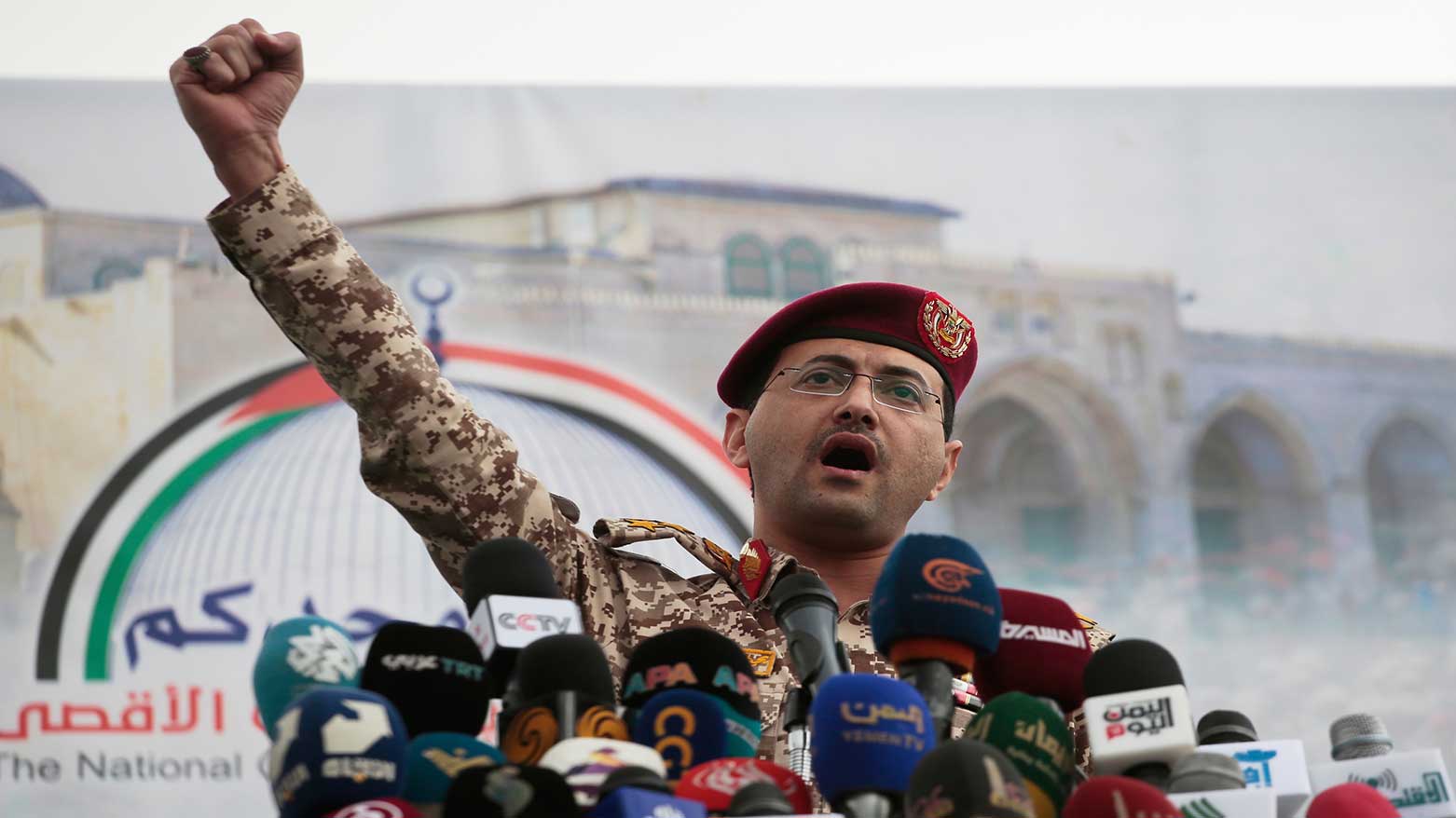Houthis Claim Attacks on U.S. Aircraft Carrier, Israeli Military Targets
This comes just 24 hours after a separate drone attack that allegedly forced the USS Harry S. Truman to retreat to the far northern Red Sea toward the Suez Canal, according to Houthi media.

ERBIL (Kurdistan24) — Yemen’s Houthi rebels announced late Wednesday that they had launched a drone attack targeting the U.S. aircraft carrier USS Carl Vinson and accompanying warships in the Arabian Sea, in what they describe as part of a broader escalation against American and Israeli military assets in the region.
Houthi military spokesperson Yahya Saree said in a statement that the operation involved multiple drones aimed at the USS Vinson and associated naval forces. This comes just 24 hours after a separate drone attack that allegedly forced the USS Harry S. Truman to retreat to the far northern Red Sea toward the Suez Canal, according to Houthi media.
Saree claimed the previous attack on the Truman resulted in the downing of an F-18 fighter jet and disrupted an aerial assault that the U.S. military had begun targeting Yemeni territory. He added that Houthi missiles and drones pursued the carrier as it moved through the northern Red Sea.
In a further escalation, the Houthis said they carried out two additional drone operations against Israel. According to Saree, three “Yafa-type” drones targeted military and strategic sites in occupied Jaffa, while a fourth drone struck a sensitive Israeli target in Ashkelon, also using a Yafa-type drone.
The Iran-backed Houthi movement, officially known as Ansar Allah, has intensified its regional military campaign in recent months, increasingly aligning its rhetoric and actions with the Iranian-led "Axis of Resistance," which includes Hezbollah and the Palestinian Hamas militant group. Their latest operations highlight the broadening scope of the conflict, extending attacks toward both American and Israeli military assets.
The USS Carl Vinson, a Nimitz-class aircraft carrier, is a core component of the U.S. naval presence in the Middle East, often deployed to project power and deter regional adversaries. Similarly, the USS Harry S. Truman has played a central role in U.S. maritime operations in the Red Sea and eastern Mediterranean.
Although there has been no independent confirmation of the Houthis’ claims regarding the downing of an F-18 or damage to U.S. carriers, the group has previously demonstrated the capability to strike with advanced Iranian-made drones and missiles, including targeting commercial shipping and military bases across the region.
The alleged drone attacks on Israeli targets in Jaffa and Ashkelon represent a significant escalation, potentially signaling a new phase in Houthi regional operations as tensions across the Middle East continue to flare amid the war in Gaza and Iran’s confrontational stance with Israel and the West.
The United States has maintained that its military presence in the Red Sea and Arabian Sea is critical to safeguarding international commercial shipping lanes that have come under repeated threat from Houthi attacks. Since late 2023, the Houthis have deliberately targeted commercial vessels, including those flagged by neutral countries, disrupting vital trade flows through the Red Sea — a maritime artery that carries 12% of global commerce.
The U.S. Navy’s operations, supported by international coalitions, aim to ensure the safety of civilian maritime traffic and prevent a broader destabilization of global trade. Officials in Washington have reiterated that unchecked Houthi aggression jeopardizes not only regional peace but also the economic security of nations around the world.
Meanwhile, in a development that could influence regional dynamics, Iran — the primary backer of the Houthis — is preparing for a fourth round of high-stakes negotiations with the United States over its nuclear program. The talks, mediated by Oman, are set to take place in Rome on Saturday, marking the most substantial U.S.-Iran diplomatic contact in years. Iranian Foreign Minister Abbas Araghchi announced that Iranian officials will also meet with representatives from Britain, France, and Germany — key signatories of the 2015 nuclear agreement.
While the West accuses Tehran of seeking nuclear weapons capability, which Tehran denies, the outcome of these talks may have direct implications for Iran’s regional proxy networks, including the Houthis. Analysts suggest that a potential thaw in U.S.-Iran relations could temper Iran's military backing for its allies, or conversely, lead to a hardening of positions if talks break down.
